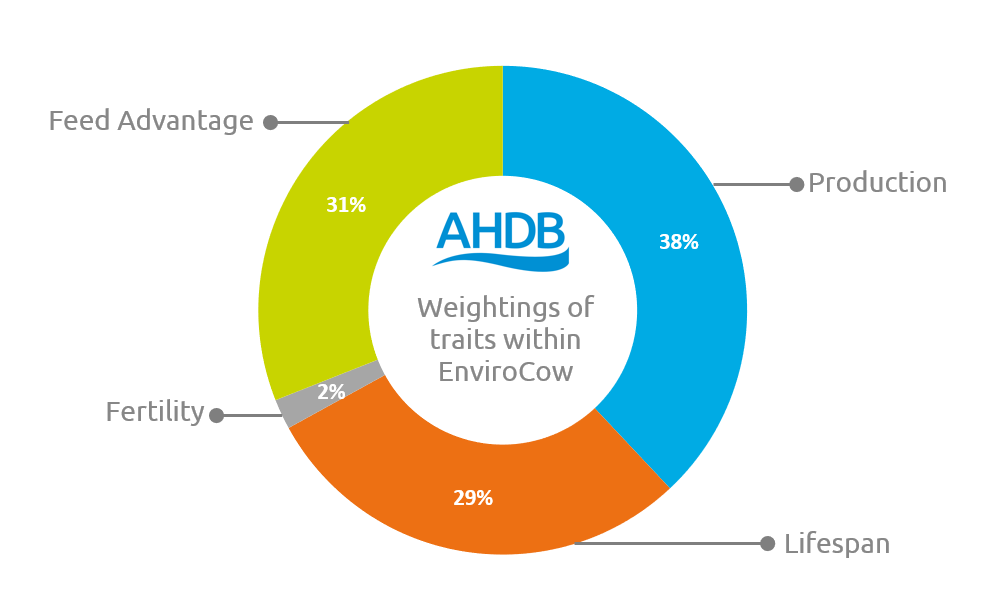Management PTAs
PTAs such as temperament, ease of milking, and maintenance can make a difference to the management and efficiency of your farm.
Back to: Breeding indexes and traits
Management traits
Management traits allow a streamlined and undisrupted milking routine and have increased in importance as farm dynamics have changed over time. Let’s look at each of them in more detail.
Temperament
Although rearing and handling are key to shaping a cow’s temperament, the clear genetic component to this trait has led to the calculation of genetic indexes for temperament in the parlour. This PTA is expressed on a standardised scale of -3 to +3, with the highest indexes indicating the predicted transmission of a placid temperament.
Ease of milking
Genetic indexes for ease of milking are also expressed on a -3 to +3 scale. Lower minus figures represent hard-milking cows, while high positive figures predict very fast milking and daughters potentially running milk.
Maintenance
The Maintenance PTA is published as a stand-alone trait that estimates the feed efficiency differences of animals and allows farmers to select bulls accordingly.
The cost of maintaining a cow is related to its weight, so a cow weighing 600 kg will have a lower feed requirement for its maintenance than a cow weighing 700 kg, even if they give the same amount of milk.
As we don’t routinely weigh dairy cattle, we’ve studied the traits most closely related to the cow’s weight. These are stature, chest width, body depth and angularity, and they’re used to indicate the costs of maintenance.
Figures for Maintenance Index are expressed on a scale of roughly +50 kg to -50 kg, giving an indication of the average difference in weight expected in a bull’s daughters. Negative figures are desirable, as they’ll help producers to breed cattle with lower feed costs.
The Maintenance PTA of individual bulls should be used as part of a broader breeding strategy.
Dairy Carcase Index
The Dairy Carcase Index (DCI) has been developed primarily for producers sending dairy youngstock to the beef supply chain or rearing their own beef.
It’s calculated from weight, age and carcase information from most major abattoirs in the UK, and it’s mainly based on average daily carcase gain and carcase conformation.
It’s expressed on a scale of about -5% (bad) to +5% (excellent), and an increase in the index predicts improved carcase conformation and average daily carcase gain in a bull’s progeny.
EnviroCow
EnviroCow reflects the important role genetics and breeding play in improving the environmental efficiency of milk production. Incorporating cow lifespan, milk production, fertility and Feed Advantage, EnviroCow is one of the first genetic indexes in the world to focus solely on breeding cows for their environmental credentials.
EnviroCow is expressed on a scale of about -3 to +3, where the highest positive figures are achieved by bulls which transmit the best environmental credentials to their daughters. These will be cows which are predicted to create the least GHG emissions in their lifetimes for each kilogram of solids-corrected milk they produce.

See how EnviroCow can help reach net zero
EnviroCow linked to high efficiency
EnviroCow's impact on UK Dairy's carbon footprint
Feed Advantage
Feed Advantage helps dairy producers identify bulls with the greatest tendency to transmit good feed conversion on to their daughters. It is expressed as a Predicted Transmitting Ability (PTA) in kilograms of dry matter intake saved during each lactation.
The index’s launch represents the culmination of over 30 years of research and data collection from the award-winning Langhill herd in Dumfries. Undertaken by Scotland’s Rural College (SRUC), the studies have measured the Langhill cows’ dry matter intake throughout their entire lives.
Adjustments are made for the size of the animal, as a smaller cow requires less feed than a larger cow giving the same level of milk production. The most efficient cows consume as much as 400kg less in one lactation compared with the least efficient cows, meaning that for the same level of production there is substantial scope for cutting feed use.
See how feed advantage can help reach net zero
Useful links
Find out more about genetic indexes
Find out about health, welfare and fitness PTAs
Learn about calf survival PTAs
Discover the different groups of type PTAs
Find out more about selection indexes
Learn about the progress made in dairy herd genetics
Find out about common genetic defects
Read the Dairy beef production systems guide
If you would like to order a hard copy of the Dairy beef productions guide, please contact publications@ahdb.org.uk or call 0247 799 0069.

